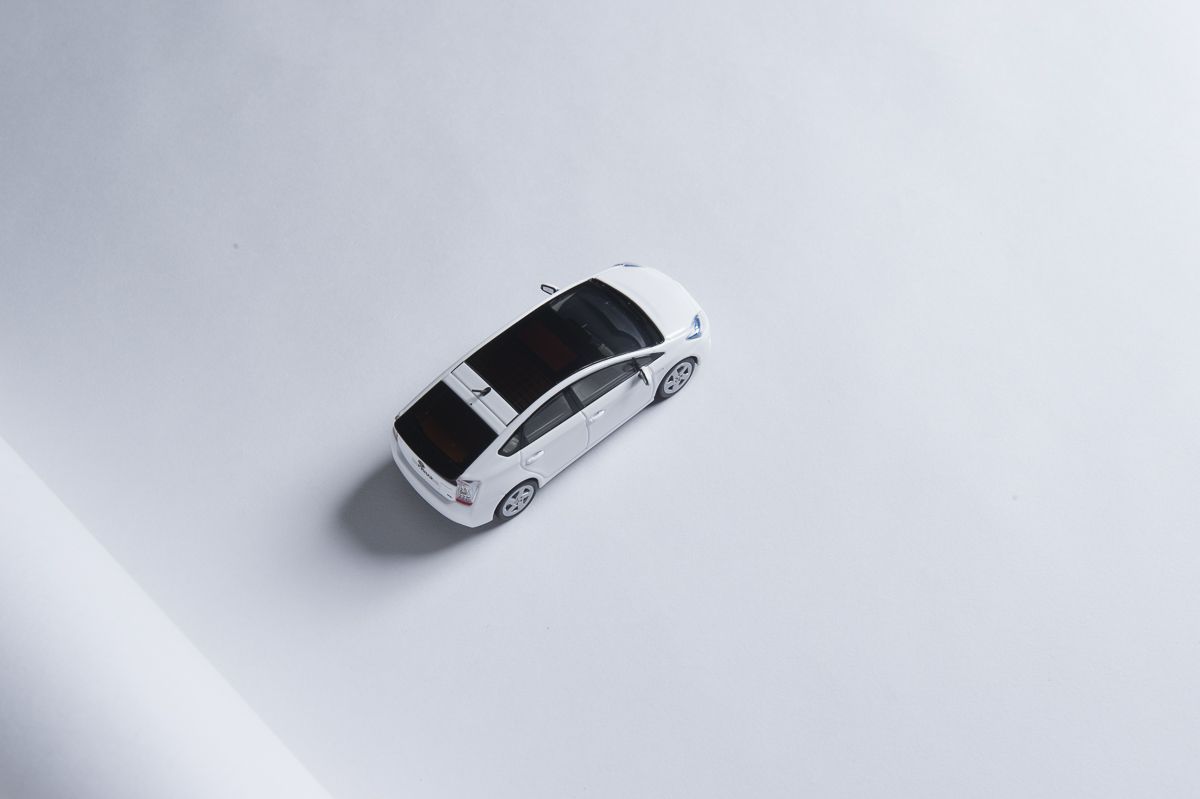Self-driving cars: the next major technological revolution
Stories
Grandpa, did you have to drive a car yourself?! There is absolutely no doubt in the mind of TU Delft researchers working on self-driving cars: this is going to be the major technological revolution of the decades ahead. In terms of impact, comparable with the advent of the internet and mobile phones. The autonomous car will not only completely change how we drive, but also how we look at transport and car ownership. But, in addition to the technical dares, there are also significant moral and legal consequences.
In the not too distant future, let’s say 2050, we’ll have to explain what a car used to be like to our grandchildren. Just like we now amuse our children with stories of how telephones looked 20 years ago; with a wire. “Yes, son, it’s true!” In 2050, only a few diehard petrol heads will still be taking the wheel themselves. All cars will be self-driving, either with or without a robot driver. Hardly anyone will own their own car, vehicles will be shared. ‘Greenwheels’ à la 2050. There will be no such thing as parking spaces, each car will be constantly en route. Traffic jams will be a thing of the past, and lorries will only travel at night, naturally without a driver. The question is whether buses, trams and trains will still be necessary.
Sceptical
Many people sceptically shake their heads at such notions of how the future will look. Primarily because they think that the psychological obstacle is insurmountable: humans are not going to entrust their fate to a self-driving car. Or because they think it’s far too much fun to change gears and steer. However, Alexander Yarovoy has no doubt.
The Professor of Microwave Sensing, Signals & Systems from the Department of Microelectronics, specialising in new radar systems, is one of the many TU Delft researchers working on self-driving cars. And in such cars, he sees the next major technological revolution. “Because it is a development that will have an enormous social impact. Far fewer traffic accidents, no more tailbacks; a completely different concept of transport.
The autonomous car will be the most significant driving force behind technological innovation in the decades ahead.” But he nevertheless sees that not everyone is enthusiastic about the supposed technological revolution. “It’s engineering”, says Alexander. “More fundamental fields of research traditionally receive more attention. Whereas the impact of this on our society will be at least as far-reaching.” He adds, laughing: “But the developers of the mobile phone never received a Nobel Prize, either.”
Survival in the urban jungle
Most articles about self-driving or computer controlled cars primarily examine the short-term practical and technical developments. We are all familiar with these: cars that park themselves and, as a logical next step, the autopilot for motorway driving. A motorway does not offer much difficulty for the automatic pilot, being a relatively orderly and predictable environment.
But things are completely different in the extremely complex urban jungle, where unpredictable, agile objects such as cyclists, pedestrians, pigeons, children and dogs all come into play. Alexander: “A highly complicated system is required to ensure that cars and passengers can travel safely and efficiently from A to B in the city.” He points out that he and his fellow researchers around the world are making good progress with the individual technical aspects. “The major challenge is integrating the various subsystems.”
Moral implications
The moral and legal implications are perhaps more problematic. Because what happens if the robot driver is forced to opt for the lesser of two evils? To name just one dilemma: what if it, for example, needs to swerve to avoid a cyclist, but can only drive onto the pavement where a pedestrian is walking?
Should a human be able to assume control in such a situation, or should the decision be left to the robot? And if you leave it to the computer, on what criteria does it base the decision? “These are ethical and philosophical decisions that you cannot simply ignore.” Yet in spite of this, Alexander is absolutely sure that the self-driving car is on its way. “For the simple reason that a robot is a much safer driver than a human.”
Gradual introduction
Alexander’s colleague Theresia van Essen, a mathematician developing a model for the optimal application of a national fleet of self-driving cars (see page 22), also has no doubt that our future will feature autonomous vehicles. Both recognise the merits of a step-by-step introduction, something also required for gradual, psychological acceptance. We will all start by having a car that can park itself, the motorway autopilot will follow, before a cautious transfer to self-driving in brisk city traffic. “And the final step will be a complete national fleet of shared, self-driving cars”, predicts Theresia. “But I don’t expect that for another 40 years or so.”
Unpredictable pedestrians
The most significant technical dare relates to how you have the computer in charge make decisions in a complex environment that primarily burdens it with incomplete, so-called ‘soft’ information. Hard information is no longer much of an issue. A car – a fairly straightforward object – travels towards you at a certain speed and from a certain direction; that is information that is quite easy to encapsulate in mathematical logarithms that a computer can use. But pedestrians are unpredictable and a lot more complicated. Or consider a situation in which a robot is driving a passenger and the latter suddenly panics and shouts incomplete information: “Watch out, a car is coming!” Radars are set to play a significant role, as the car’s eyes.
Together with research teams from University College London, the Karlsruhe Institute of Technology and Ulm University, Alexander’s Radar Group is a European leader in the development of ultramodern radar systems. But remember: we are talking about radars, not cameras. Alexander does not set store by the latter. Well, perhaps as additional eyes. “Cameras cannot see anything when it’s misty.” Of course, radars are (as yet) not infallible either.
What needs to happen if two cars approach each other that both have their radar set to the same frequency? Or: what if a radar is damaged in an accident, but the car continues to drive? Is there a reserve? A pertinent research question for the long term: the self-driving car will soon be packed with radars and other sensors, but how can each radar be used most efficiently? You can use the radars in different ways, and one method is more efficient in a certain situation than the other. For example, does the radar make a low or high frequency scan of a certain location at a certain time? “We need autonomous radars and a ‘fusion and control system’ that can manage such a set-up. We are one of the few research groups in the world working on this subject.”
Revolutionary ground
TU Delft already has a Toyota Prius ready to be used as a guinea pig. Alexander expects the car to complete an autonomous trip around the campus within a year from now. In the meantime, he can hardly contain his enthusiasm. And that is not surprising: if you can develop a robot that successfully operates in a complex and unpredictable environment such as the city, you take the complete development of robotics to the next level. Alexander: “That’s why this is such a revolutionary area.”
A glimpse of the future: nobody will own their own car
Theresia van Essen’s view of the future is at least as spectacular as that of her colleague Alexander. Theresia, a mathematician specialising in process optimisation models, is convinced that nearly all of us will soon – let’s say in 2050 – travel in shared, self-driving cars. And that there will be as much as one million autonomous cars in the Netherlands alone, capable of facilitating many millions of trips every day.
Together with her colleague Gonçalo Homem de Almeida Correia from Civil Engineering, she focuses on the mathematical challenge of developing software that ensures that all of the cars in the country can be used as efficiently as possible. In other words: how do we transport as many people from A to B every day as quickly and cheaply as possible? And how many cars will be required to do so?
National network
Until recently, a similar question was one of Theresia’s focuses: how could the ambulance helicopters in Norway be used as efficiently as possible, and where should they therefore be stationed? However, to say that her current car-related research is more complex is putting it mildly.
In Theresia’s universe, you use your telephone (will we still have them?) to order a self-driving car ten minutes before you want to depart. You indicate whether you would prefer the car to yourself, or would like to travel with other passengers, and whether you would like the standard or luxury version. Perhaps you could even add your preference for a colour or brand. “Imagine that we do indeed realise such an extensive and advanced network of shared cars; I don’t think that public transport as we now know it will exist then.”
Living in the future
Why research a subject that will only come to the fore in a few decades’ time? “It is indeed quite unique. I am trying to solve a problem that does not yet exist. But you never know how rapidly things can develop. And the results of our research may actually accelerate the introduction of such an idea. Certainly if we can develop a model that offers significant social benefits. Such as more efficient and environmentally friendly transport in the city, without parking spaces and traffic jams.”
Two misconceptions about the self-driving car that, according to Alexander Yarovoy at least, need to be cleared up.
The first operational autonomous car comes from the United States.
You may expect this to be the case, with major investors including Tesla, Google and Apple. However, Alexander Yarovoy argues that Europe is currently leading the way, and everyone is currently following developments at car manufacturers such as Daimler, Volkswagen and BMW. He adds, laughing: “In the US, they operate in the empty, undemanding, sunny plains of California. That is a lot less complicated than the enormously busy European roads. Especially in the mist, rain or snow.”
We will end up sitting next to or behind an empty driver’s seat with a steering wheel that moves by itself.
It is more likely that in a few decades from now, we will travel in vehicles that look nothing like existing cars, and that do not even have a steering wheel or driver’s seat. Because by then, we will be doing completely different things in the object that takes us from A to B. We can work, relax, play computer games, chat, do the grocery shopping online; the design and interior of the car will adjust to this evolving function.


